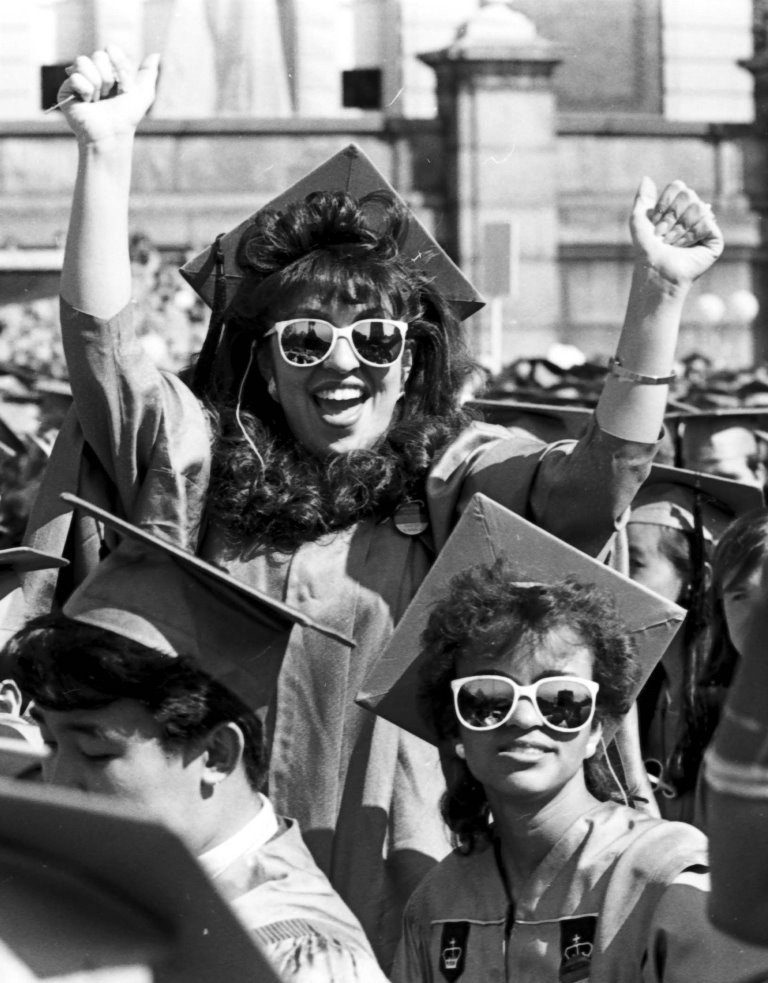Coeducation at Columbia
An Overview
The issue of coeducation has had an enormous impact on the development of Columbia University for over a century. King’s College, renamed Columbia College after the American Revolution, was an all-male domain from its founding in 1754 well into the mid-nineteenth century. By the Gilded Age, however, many Americans had come to believe that women as well as men should have access to a thorough education – an education, as University President Frederick A.P. Barnard said, that was more than “ornamental.” [1]
How and where women should be schooled was a more divisive matter. By the early 1870s, a vocal group of New York women began petitioning the Board of Trustees to allow women to enroll in the School of the Arts, the then-undergraduate program at Columbia College. They found a great ally in President Barnard, who argued passionately for the expediency and propriety of coeducation at Columbia in a series of President’s Reports. The Board of Trustees, however, believed differently. While most of the Board members did not publicly disapprove of women being educated, they objected to men and women learning in the same classrooms. In 1883, the Board voted against coeducation; President Barnard cast the only dissenting vote.
In an attempt to compromise, or perhaps as a reaction to the bad press they received after their rejection of coeducation, the Board agreed to establish a Collegiate Course for Women. If admitted, women could enroll in Columbia courses, but they could not attend the lectures. They sat for the same exams as male students, but the exams were administered offsite. The Collegiate Course proved to be woefully inadequate, prompting the establishment of Barnard College, an all-female college, in 1889.
The establishment of Barnard College effectively diffused the issue of coeducation at the undergraduate level for some time. In the meantime, women gradually and quietly entered Columbia’s graduate programs in small numbers. Columbia awarded its first degree to a woman in 1886, when Winifred Edgerton graduated cum laude with a Doctor of Philosophy in Astronomy. By 1942, all of the professional schools admitted women; Columbia College remained the last all-male bastion.
By the time the issue of coeducation arose again in the 1970s, the debate had changed dramatically. In the wake of second wave feminism, most Americans came to view male colleges as anachronistic. Columbia College administrators joined the all-male student body in advocating the admission of women to the College. Virtually all the proponents of integrating Columbia College believed that admitting women would raise the number of applications of the College, which would raise standards for admission and restore Columbia to its place as one of the best undergraduate programs in the country.
Ironically, it was Barnard College administrators and a large portion of the Barnard student body that objected to coeducation at Columbia. They spoke out passionately against merging Barnard and Columbia Colleges, claiming that women sought out and appreciated the supportive all-female educational environment that Barnard offered. Barnard opponents of coeducation were also wary of Columbia College admitting women, fearing that application numbers would drop precipitously and that Barnard would lose its competitive edge.
In the end, the needs of Columbia College won out over Barnard’s objections. After two years of negotiations between Barnard and Columbia, the two colleges reached a coeducational agreement. Barnard would gain more academic and administrative autonomy, and in exchange, Columbia would begin admitting women in the fall of 1983. The first coeducational class graduated from Columbia College on May 12, 1987, represented by a female valedictorian and salutatorian. President Barnard and the nineteenth century feminists who had so passionately advocated for coeducation would have been proud to see their activism finally come to fruition.
[1] F.A.P. Barnard, "The Higher Education of Women," 1879, Historical Subject Files, University Archives, Rare Book & Manuscript Library, Columbia University in the City of New York.
Content written by Julie Golia, PhD 2010
